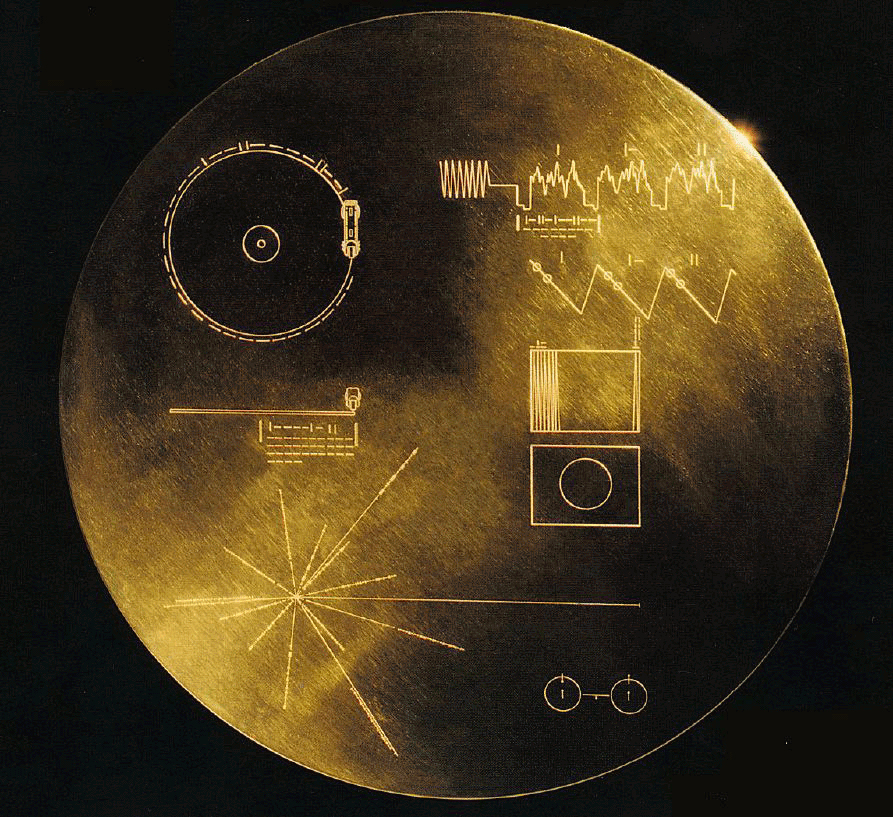Voyager 1 Spacecraft Enters Interstellar Space: Complete Coverage

Editor's Note: This archive was updated Sept. 15 with SPACE.com's latest Voyager 1 news. Check it out below!
NASA's Voyager 1 probe has made space exploration history by becoming the first spacecraft from Earth to leave the solar system behind and enter interstellar space.
The Voyager 1 news is so historic that we here at SPACE.com could not contain it in just a single story. See our full coverage of NASA's Voyager 1 announcement on Sept. 12, 2013, unveiling the discovery that a robotic emissary from Earth is now voyaging through interstellar space:
The Big News:
It's Official! Voyager 1 Spacecraft Has Left Solar System
A probe from Earth has taken its first steps in interstellar space. After streaking through space for nearly 35 years, NASA's robotic Voyager 1 probe finally left the solar system in August 2012, a study published today in the journal Science reports. [Photo Timeline: Voyager 1's Trek to Interstellar Space]
Some Perspective:
How Big Is the Solar System?
Voyager 1 has left the solar system. The big news that the spacecraft reached interstellar space on or around Aug. 25, 2012, after its decades-long sojourn, begs the question: Just how far did it have to travel to knock on cold, dark space's door? From our sister site Livescience.
Voyager Videos:
Voyager 1 Goes Interstellar: Solar System Boundary Passed | Video
NASA Channels Star Trek During Voyager Interstellar Announcement | Video
Voyager 1 Records 'Sounds' From Interstellar Space | Video
Voyager Welcomed To Interstellar Space | Video
Sunday, Sept. 15
Breaking space news, the latest updates on rocket launches, skywatching events and more!
What Will Voyager 1 Find?
For Voyager 1, New Discoveries Await in Interstellar Space
NASA's Voyager 1 probe won't rest on its laurels after becoming the first manmade object ever to reach interstellar space. Here's what it may find.
Saturday, Sept. 14
Voyager View from Earth:
Pale Blue Dot 2: Voyager 1 Signal from Interstellar Space Seen from Earth: Photo
NASA's Voyager 1 spacecraft nearly 12 billion miles from Earth is still phoning home from interstellar space, and a new NASA photo captures that radio signal as pale blue speck in a cosmic ocean.
Friday, Sept. 13
Voyager's Next Stop:
Interstellar Traveler: NASA's Voyager 1 Probe On 40,000-Year Trek to Distant Star
Now that NASA's Voyager 1 probe has left the solar system, its next big spaceflight milestone comes with the flyby of another star — in 40,000 years.
How NASA Knows It's True:
Voyager 1 Really Is In Interstellar Space: How NASA Knows
For NASA, it's official: Voyager 1 has entered interstellar space. But given the many false alarms over the years, what makes scientists so confident now?
Thursday, Sept. 12
Interstellar Space Speaks!
Voyager 1 Probe Captures 1st-Ever Sounds of Interstellar Space (Video)
Thanks to NASA's far-flung Voyager 1 spacecraft, which left the solar system in August 2012, now everyone here on Earth can listen to the sound of interstellar space.
The Big Interview:
Leaving the Solar System: Q&A with Voyager 1 Chief Scientist Ed Stone
NASA's Voyager 1 probe left the solar system last August, researchers announced today (Sept. 12). SPACE.com caught up with Voyager project scientist Ed Stone to discuss Voyager 1's historic achievement and what's next for the venerable probe.
5 Facts About NASA's Far-Flung Voyager Spacecraft
Take a look at five of our favorite facts about NASA's distant Voyager 1 and 2 spacecraft here.
Infographics:
How NASA's Voyager 1 and 2 Missions Worked
NASA's Voyager 1 and 2 probes launched in 1977 to visit the outer planets of the solar system. After 35 years in space, the twin probes are approaching the edge of our solar system.
Our Solar System Explained From the Inside Out
A graphical representation of our solar system to scale - see how far the planets are from the sun in astronomical units.
More Photos:
The Grand Tour: Photos from NASA's Voyager 1 and 2 Spacecraft
See images from NASA's twin Voyager probes, the farthest spacecraft from Earth.
SPACE.com will have more news and features on Voyager 1's historic spaceflight milestone in the days to come.
More Voyager Mission Resources
Voyager Spacecraft: Beyond the Solar System
Quiz: How Well Do You Know Our Solar System?
Voyager 1: Earth's Farthest Spacecraft
Voyager 2: Sailing Among Giant Planets
Solar System Planets: Order of the 8 (or 9) Planets
Our Solar System: Facts, Formation and Discovery
Follow us @Spacedotcom, Facebook and Google+.

Space.com is the premier source of space exploration, innovation and astronomy news, chronicling (and celebrating) humanity's ongoing expansion across the final frontier. Originally founded in 1999, Space.com is, and always has been, the passion of writers and editors who are space fans and also trained journalists. Our current news team consists of Editor-in-Chief Tariq Malik; Editor Hanneke Weitering, Senior Space Writer Mike Wall; Senior Writer Meghan Bartels; Senior Writer Chelsea Gohd, Senior Writer Tereza Pultarova and Staff Writer Alexander Cox, focusing on e-commerce. Senior Producer Steve Spaleta oversees our space videos, with Diana Whitcroft as our Social Media Editor.
